MSU Distinguished Professor awarded $1 million to address apple, sweet cherry diseases
Dr. George Sundin receives funding from USDA-NIFA to explore bacteriophage as a tool for preventing fire blight, bacterial canker in Michigan fruit trees
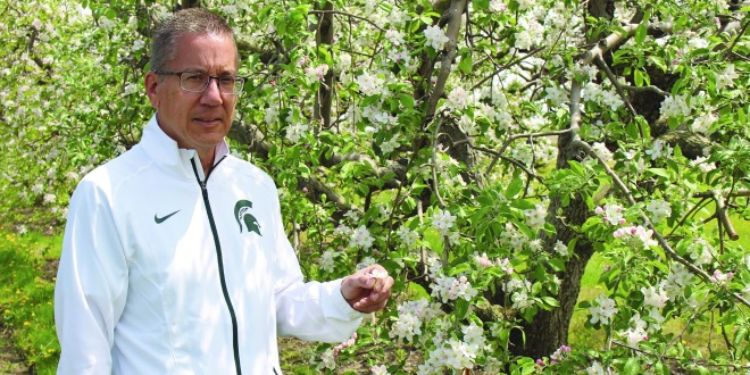
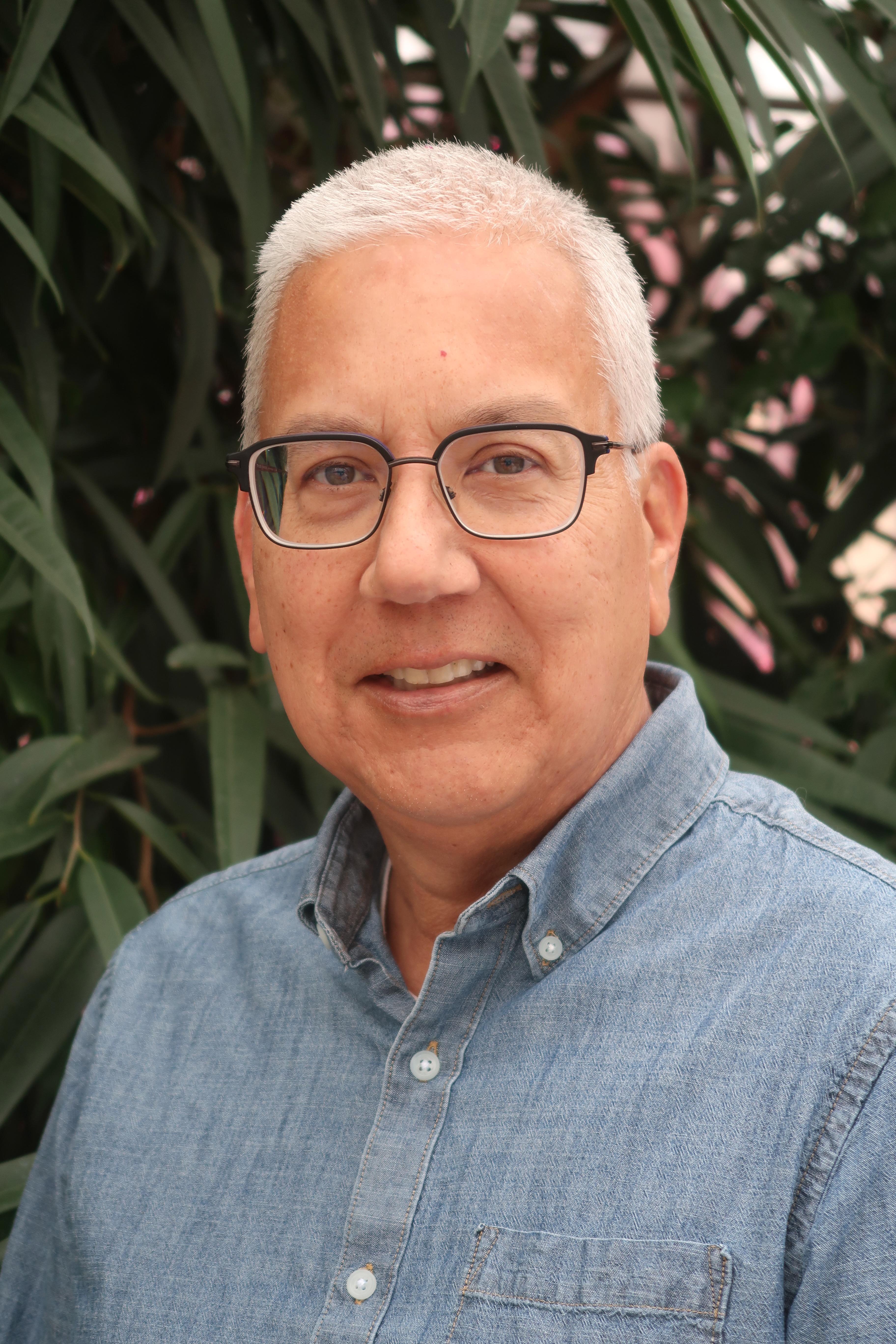
EAST LANSING, Mich. – For more than 30 years, Michigan State University Distinguished Professor Dr. George Sundin has examined the relationship between plants and the pathogens that can infect them and destroy entire orchards, threatening food safety and security and the health of some of Michigan’s most valuable commodities.
Sundin, University distinguished professor and MSU Extension Specialist in the Department of Plant, Soil and Microbial Sciences, works closely with Michigan’s tree fruit farmers through partnerships with the Michigan Apple Committee and Michigan Cherry Committee to address issues most affecting the health and safety of Michigan’s fruit crops.
Sundin’s research and outreach have impacted the management of fire blight and apple scab of apple trees; cherry leaf spot, American and European brown rot, and bacterial canker of sweet and tart cherry; and bacterial spot of peach, nectarine and plum.
“We also actively work on fungicide resistance in apple and cherry pathogens, and the evaluation of new bactericides and fungicides for disease management in apple, cherry and peach. The goals of my Extension program are to provide timely information and recommendations on management of tree fruit diseases to growers in Michigan and in other fruit-growing regions,” Sundin said.
Sundin and his team of researchers and Extension specialists recently earned $1 million in funding from the United States Department of Agriculture to explore the treatment of fire blight in apple trees and bacterial canker in cherry trees.
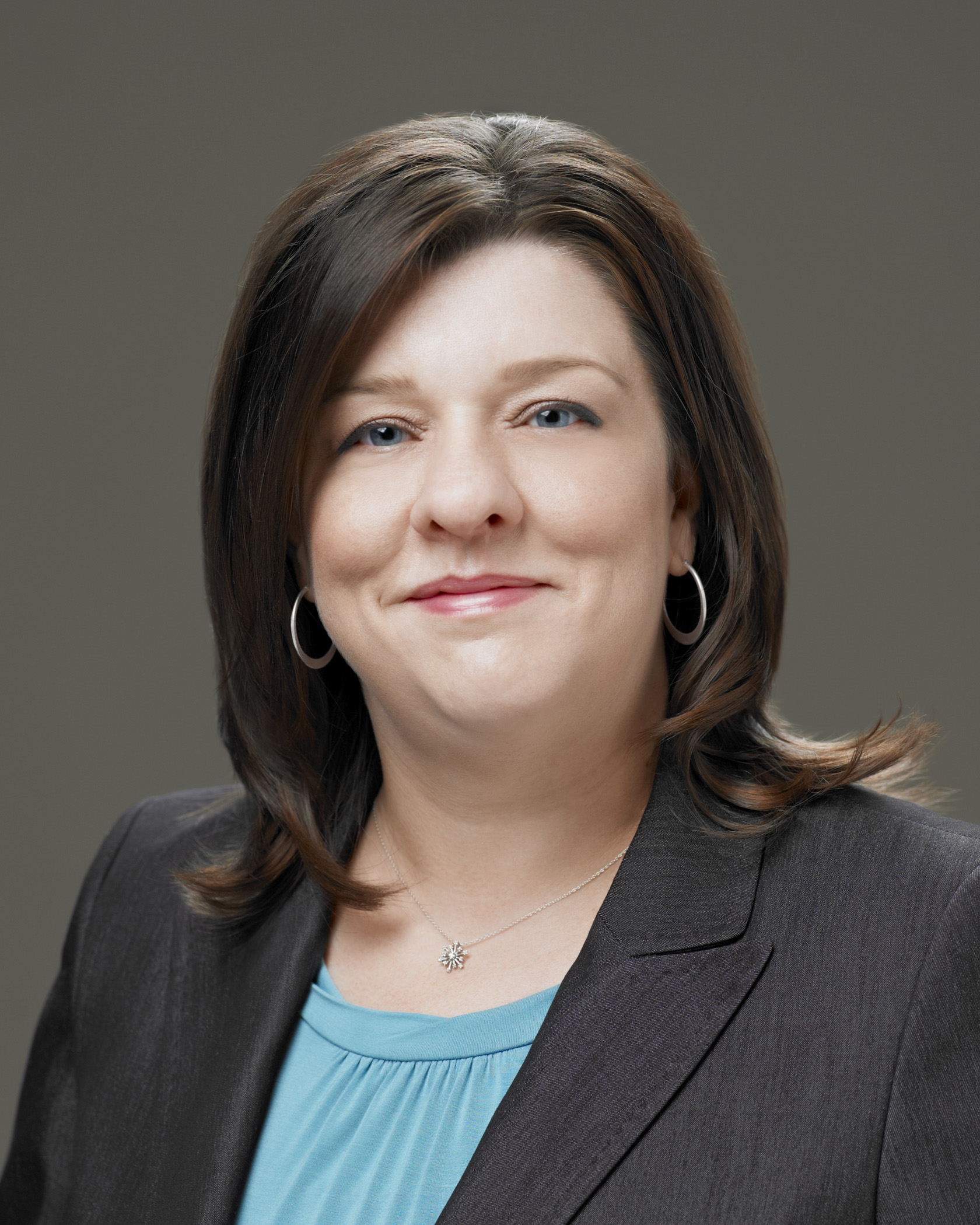
Fire blight is a disease that Michigan Apple growers actively deal with every year. It affects and damages many of the most popular apple cultivars grown in Michigan, said Diane Smith, Executive Director of the Michigan Apple Committee.
“Given the damage diseases cause in Michigan apple orchards, disease control is a high priority for the Michigan Apple Committee. Any resources to assist growers in disease management, specifically fire blight, are of great value to the industry,” Smith said.
Annual investments in MSU apple research are critical for Michigan’s growers, Smith said. In 2024, Sundin was granted $25,000 from Michigan Apple Committee to continue his work researching methods of fire blight control. His was one of 13 MSU research projects funded by MAC in 2024, which research funding totaling over $300,000.
“Michigan Apple Committee recognizes the importance of production, marketing and food safety research as integral to the success of the industry, which is why a percentage of MAC’s annual assessments are set aside specifically for research funding, with a small amount also going toward the MSU Tree Fruit Integrator position,” Smith said. “From our perspective it is a symbiotic relationship that supports the overall sustainability of the industry into the future. We are fortunate to have Michigan State University as a long-standing partner in that research and outreach that supports the success of the Michigan Apple industry.”
Bacteriophage Research
Building off bacteriophage research funded over his career by the Michigan Apple Committee, Michigan Cherry Committee and Project GREEEN, Sundin’s team will use the $1 million USDA-NIFA grant to develop phage as a commercially available option to combat tree fruit disease.
Bacteriophages (phages) represent a promising tool for managing bacterial plant diseases but require increased adaptation and efficacy as a tool for farmers to apply them to their orchards.
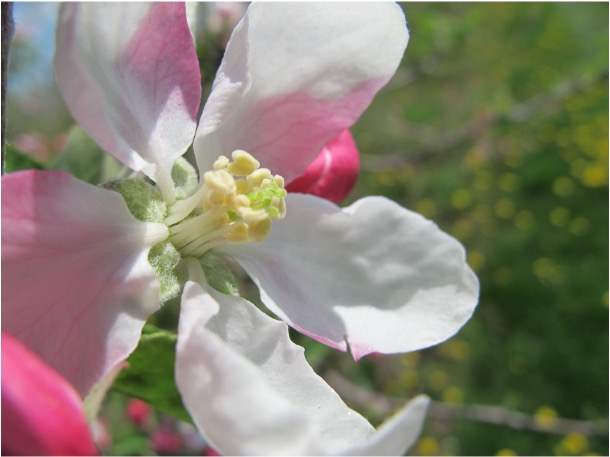
Sundin’s foundational research on fire blight caused by the bacterial pathogen Erwinia amylovora has developed a basic understanding of the pathogen-host interactions and led to the development of improved chemical and biological approaches for fire blight management.
Working directly with apple and cherry farmers, Sundin and his team will examine how bacteria attack tree flowers and how phages can be implemented during flowering to attack bacteria and prevent disease spread. Sundin’s research is based in orchards at MSU’s Plant Pathology farm and at the Northwest Michigan Horticultural Research Center in Sutton’s Bay. He also receives feedback and data from partner farms across the state.
“What sets our work apart is that we are taking phage research out of the lab and getting results in the field,” Sundin said. “We are really trying to answer these questions at the field level, and that's one thing that is great about working at MSU. We've got cherry orchards and apple orchards on our farms just south of campus, and at the Northwest Station in Suttons Bay. So, we can do this work where we need to, and it is relevant and applicable for our farmers.”
The grant project will investigate the phage-disease dynamics for fire blight on apple flowers and bacterial canker on cherry flowers. Each disease is caused by a different pathogen that attacks the tree during flowering – a roughly two-week span when the tree’s flowers are blooming.
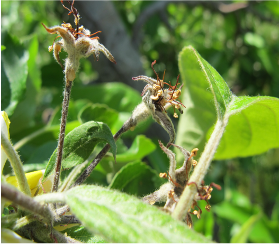
“We need, first of all, to understand the different phages required for each disease and then understand specifically how the phage work on each of those pathogens in the field,” Sundin said.
Bacterial pathogens have evolved to grow and build up populations on flowers to cause infection on the trees, Sundin’s phage method hopes to “co-opt that process with the respective phage to stop that infection.”
Phage treatment has the added benefit of time. The short flowering window prevents long exposure, helping the phage survive environmental elements, while also allowing response time to respond to trees on which the phage was ineffective.
“If we can manage disease at the flower level, that really helps us for later in the season, because if flower infection happens with either of these diseases, that really kick starts the potential for problems. Phage allow us to address the issue in the flowering-stage, and that’s what we’re really excited about,” Sundin said.
Bacterial canker of sweet cherry trees, caused by the Pseudomonas syringae pathogen, is very similar to fire blight on apples. Both diseases are chronic, fast-moving, and can survive within trees from season to season.
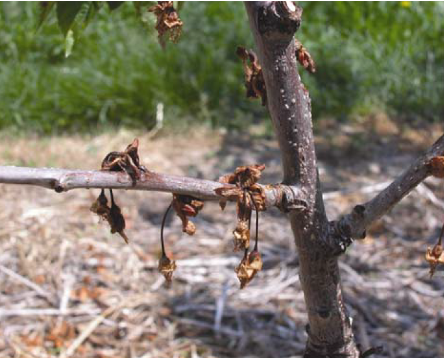
Rapid response and feedback from growers are critical to the development of phage research and unique treatment plans for individual growers.
“The Michigan Apple Committee, Michigan Cherry Committee and Project GREEEN have been instrumental in funding and supporting the long-term success of this project, really from its infancy to build the foundation for USDA-NIFA funding of this project, with the end goal of determining strategies that will make phage consistently effective for disease management,” Sundin said.
The USDA-NIFA project is in partnership with Dr. Sara Villani at North Carolina State University, Dr. Quan Zeng at the Connecticut Agricultural Experiment Station, and Dr. Nikki Rothwell at the MSU Northwest Michigan Horticultural Research Center.



 Print
Print Email
Email




